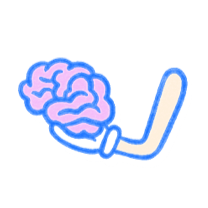Sharpen Your Diagnosis Skills: DSM-5 Practice Scenarios for the NCMHCE Exam
Preparing for the NCMHCE exam requires more than just memorizing diagnostic criteria—it demands the ability to think critically, assess complex clinical presentations, and apply DSM-5 criteria in real-world scenarios. One of the BEST ways to build confidence is through practice with realistic, exam-style cases that simulate what you’ll encounter on test day.
Why Practicing DSM-5 Scenarios Matter for NCMHCE Prep
The NCMHCE (National Clinical Mental Health Counseling Examination) assesses your clinical decision-making skills through case-based simulations. These simulations don’t just test what you know—they challenge how you think, how you evaluate mental health symptoms, and how accurately you apply DSM-5 diagnoses in context.
Practicing with case-based scenarios helps you:
- Identify subtle diagnostic features across mental health disorders.
- Apply DSM-5 criteria in nuanced clinical situations.
- Improve decision-making under exam conditions.
- Strengthen your ability to differentiate between similar diagnoses (e.g., Bipolar I vs. Major Depressive Disorder with Mixed Features).
Sample DSM-5 Practice Scenario for the NCMHCE
A 28-year-old client presents with persistent feelings of emptiness, intense fears of abandonment, and a pattern of unstable relationships. She reports impulsive behavior, including risky sexual activity and binge eating. During the session, she describes rapid mood swings and has visible self-harm scars on her forearms.
Which DSM-5 diagnosis is MOST LIKELY based on the client’s presentation?
A. Bipolar II Disorder
B. Borderline Personality Disorder
C. Major Depressive Disorder
D. Generalized Anxiety Disorder
Correct answer: B. Borderline Personality Disorder
The client’s symptoms—intense fear of abandonment, unstable interpersonal relationships, identity disturbance, impulsivity, self-harm, and affective instability—align closely with the diagnostic criteria for Borderline Personality Disorder in the DSM-5.
Tips for Diagnosing Accurately on the NCMHCE
- Focus on patterns: Many disorders share symptoms, but the pattern and duration of those symptoms are key.
- Eliminate distractors: Narrow down your choices by ruling out diagnoses that don’t fully match the clinical picture.
- Stay updated: Make sure your study materials are aligned with the current DSM-5 (not DSM-IV).
Build Exam Day Confidence Through Repetition
Mastery comes from repeated exposure to complex clinical cases. The more you practice interpreting diagnostic clues and choosing interventions, the more automatic and accurate your clinical judgment will become.
Want to feel confident walking into the NCMHCE? Start working through realistic DSM-5 scenarios with the Pocket Prep NCMHCE app and watch your diagnostic accuracy—and exam confidence—soar.

